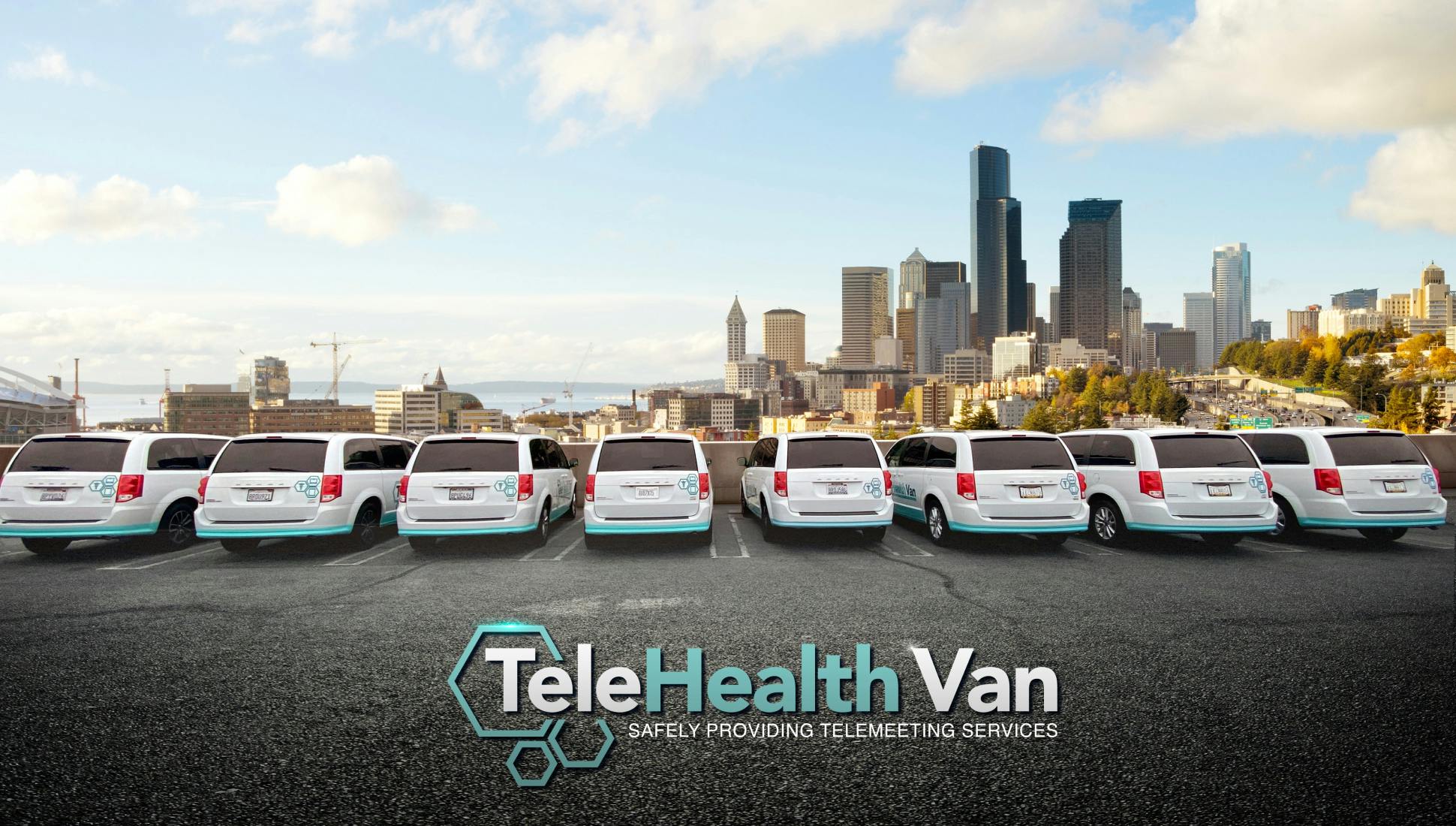
Outside a Los Angeles hotel, the words “TeleHealth Van” are unmistakably written on a parked van. A teenager cautiously approaches, reaches the van, and is asked to come inside. His mom, right behind him, encourages him to get in.
“If I’m getting in, you’re coming with me!”
And with that, both mother and son enter the van.
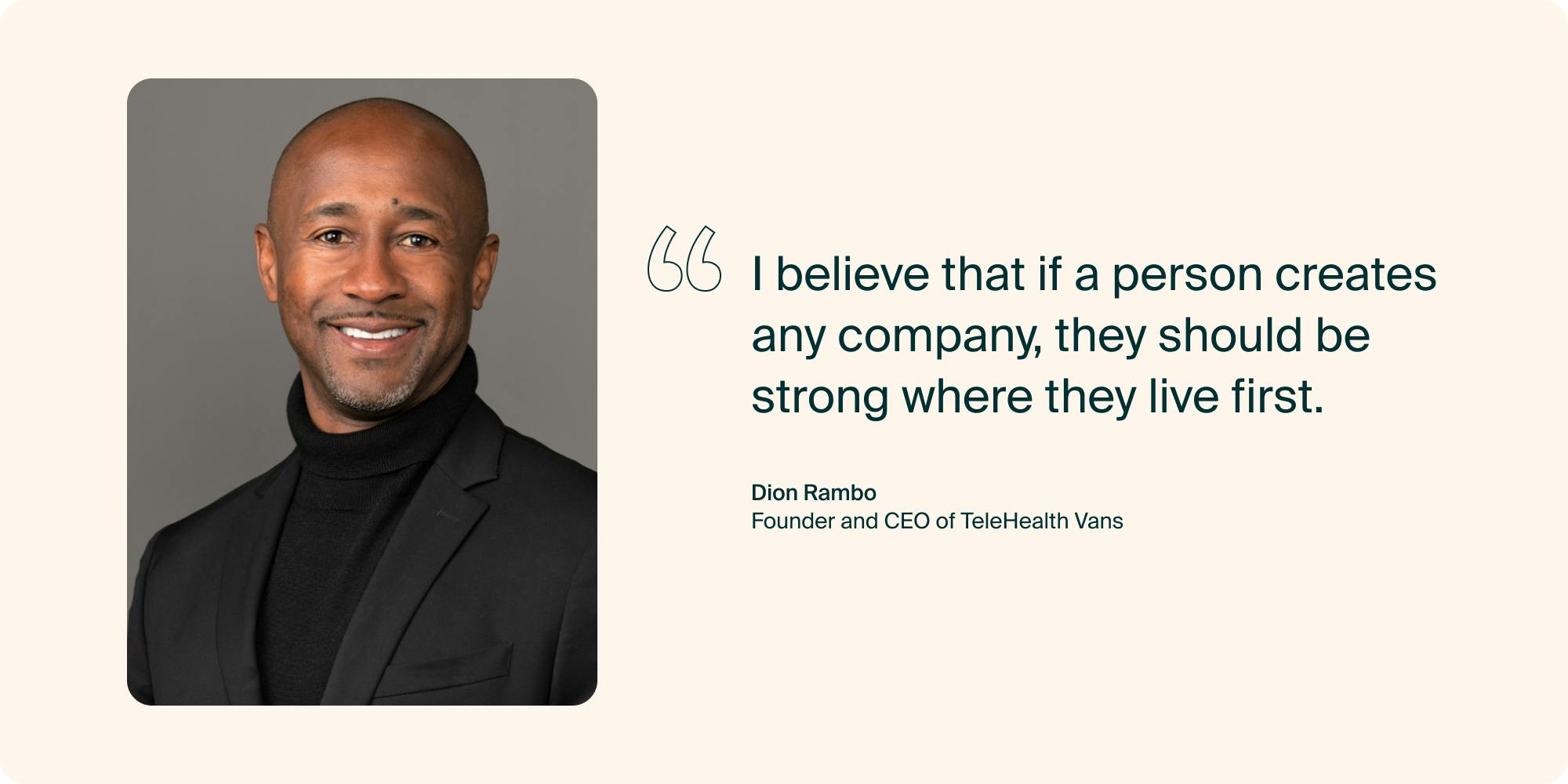
The start of TeleHealth Vans
This was the first telehealth session in one of Dion Rambo’s TeleHealth Vans, but it would most certainly not be the last.
In one of the country's biggest cities, there are many disadvantaged communities. A lot of youth don’t get the support and resources they need to succeed.
A TeleHealth Van was the start to connecting this teen with the right resources.
An hour after getting in the van, both mother and son emerged. The mother was crying. She explained that this therapy session was the first time her son had really talked with someone in months.
After many more TeleHealth Van visits, the son went on to college, and the mother was able to buy a house. Throughout life changes, a TeleHealth Van came to them, giving them the support they needed to get to where they are today.
Bringing telehealth to those who need it most
An LA native, Dion Rambo is familiar with the need for better healthcare accessibility in many communities across the city. When COVID-19 happened, this lack of access became increasingly evident. The Southern California Health and Rehabilitation Program (SCHARP) began asking how they could use telehealth to meet patient needs. Rambo said, “Let’s just go where they [the patients] are.”
From there, Rambo put the first TeleHealth Van into action.
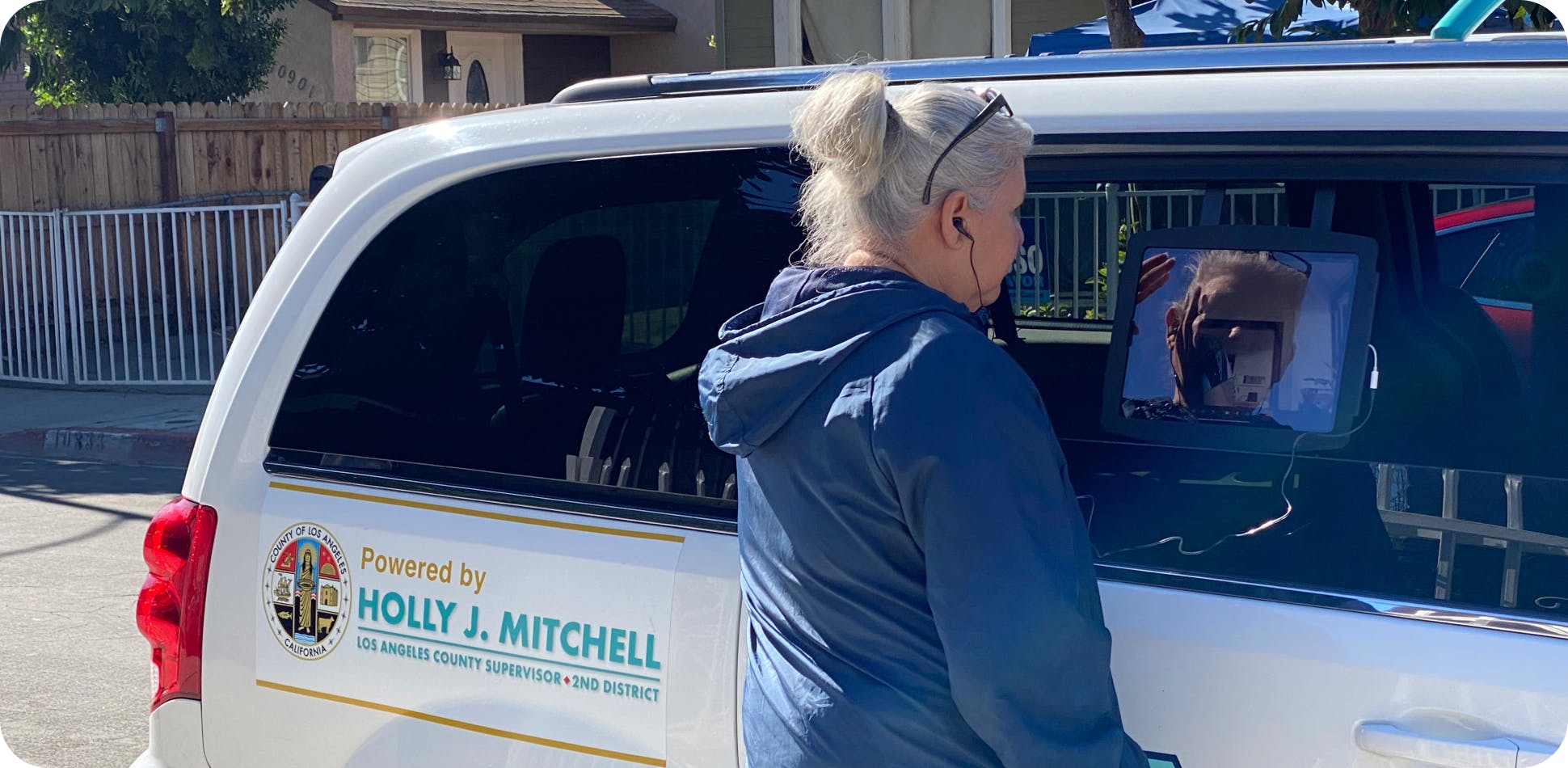
The importance of knowing the community
Today, there are approximately 20 TeleHealth Vans. In addition to SCHARP, TeleHealth Vans work with clients like Los Angeles County Department of Mental Health, US Committee of Refugees and Immigrants, and Board Supervisor Holly Mitchell.
According to Rambo, this success was only possible because he and his team knew the communities they served. As he puts it, “I believe that if a person creates any company, they should be strong where they live first.”
Rambo grew up in South Central LA, right next to Skid Row. As an African American, he understands what minorities in disadvantaged neighborhoods throughout LA are up against. He also knows how to build trust and relationships and currently serves as LA County Commissioner.
Here's what Rambo did to increase access to healthcare in his community.
Build a presence in the community
Rambo explains that when he was growing up, there were healthcare clinics in each neighborhood. Residents would see their providers walking down the street, and they would take the time to talk with each other outside of healthcare appointments.
Seeing someone as part of your community instantly helps build trust. That’s why Rambo makes sure his vans are seen all over communities.
“I have my drivers physically drive through the community and just stop at key locations,” Rambo explains. This is the same thing as building brand recognition—it’s helping people familiarize themselves with TeleHealth Vans.
“It’s about trust,” says Rambo.
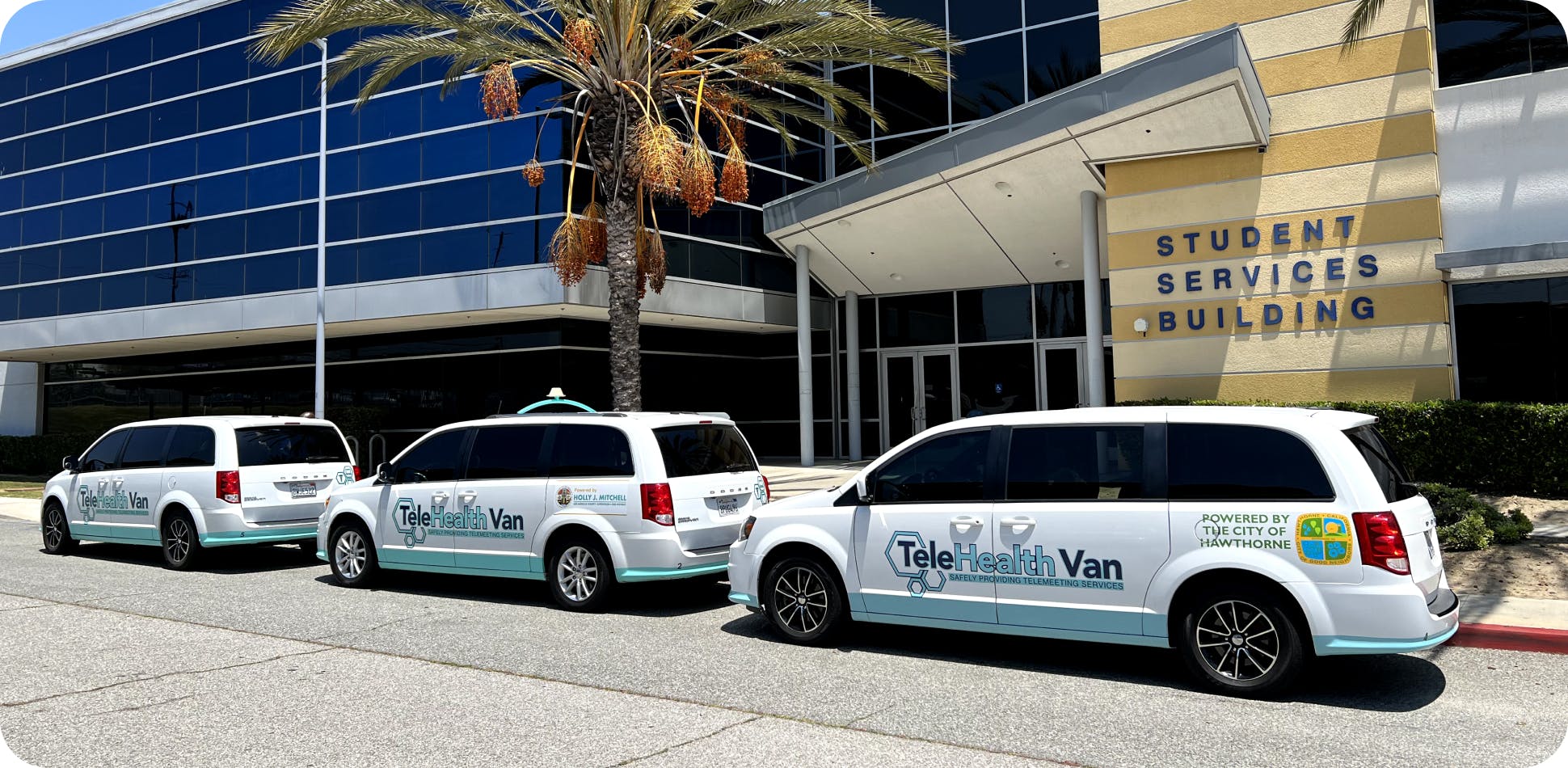
Find culturally-competent providers
While TeleHealth Vans have traveled far beyond Rambo’s LA community, its focus remains the same: to provide culturally-competent care.
When the US military approached TeleHealth Vans to provide telehealth services to Afghan refugees at three military bases, Rambo and his team went to work finding culturally-competent providers. Finding therapists who spoke Pashto and/or Dari and who met the cultural expectations of the Afghan refugees was a challenge.
“They [the Afghan clients] have to see themselves in whoever they meet with,” said Rambo.
Mental health is not a priority in Afghan culture, so finding the right therapists was vital. Thankfully, Rambo’s team found providers who fit the Afghan refugees' cultural and linguistic needs. This was a major part of their success in serving this new community.
💡Practical application: If language is a barrier to any of the patients you serve, consider using Voyce’s medically trained interpreters. They are available on-demand through doxy.me.
(Read Maximize language accessibility: 3 federal compliance tips.)
Incentivize patients
Rambo knew the communities they served might be hesitant to try this new way of meeting with healthcare providers. (After all, most of us were told from an early age not to jump into white vans with strangers.) This way of receiving care was completely new, and for many people, it was not a priority. Day-to-day, immediate needs often overshadowed any thoughts about long-term wellness.
Rambo recounted how one person suggested that if people don’t care about their health, there’s nothing they could do. He disagreed.
That’s why clients get a grocery store gift card after every five visits. To keep track of visits, clients receive a stamp (similar to a loyalty rewards card) each session. Most of these TeleHealth Van visits are for mental health, so it’s important that clients have regular, ongoing sessions.
“We’ve had people who wouldn’t get into the van to meet their therapist if they couldn’t get a stamp that went towards getting a grocery card,” said Rambo, emphasizing how integral incentives are to the TeleHealth Vans.
💡Practical application: Understanding the community you serve can help you identify needs that aren’t being met. If a healthcare appointment also addresses a basic need like food, water, or clothing—then you have a powerful incentive that can also support a patient’s overall health. Even if the population you work with has their basic needs met, knowing that community can help you understand what motivates them.
Partner with pillars of the community
Often, organizations are already providing some level of care to their communities. It could be churches or other religious groups, nonprofits, or the local chamber of commerce. TeleHealth Vans has a host of partners, some of which include Goodwill, local colleges, and addiction rehab centers. Of course, TeleHealth Vans also has contracts with local government agencies, like the City of Hawthorne and the Los Angeles County Department of Mental Health.
While partners like Goodwill help by providing free clothes, other partners' primary involvement is helping refer clients. Rambo explains, “We should be more assertive with offering resources, understanding that they [potential clients] don't know they need support. But our partners see signs that they need help.”
Frequently, these community partners are the first who can tell when someone needs assistance.
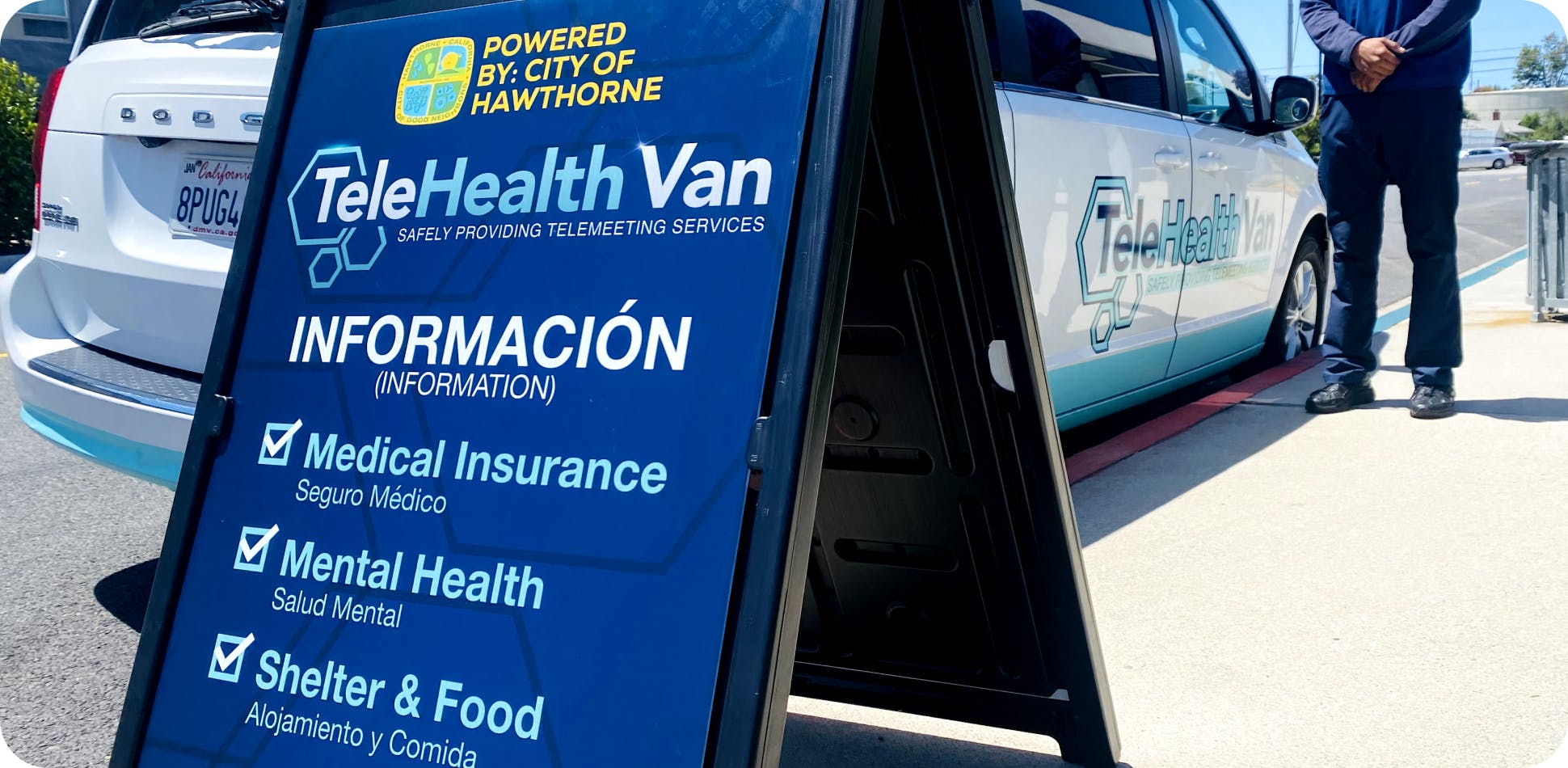
💡Practical application: While TeleHealth Vans partners with these organizations to help provide resources, a partner can also give you the space for a telehealth clinic. If you’re just getting started, consider partnering with an organization that can provide the space for a stationary telehealth clinic.
Improve accessibility
When you know your community, you can begin to identify specific problems or barriers to getting care.
A mobile van that physically meets patients where they are definitely improves accessibility. A lot of people would stop there, thinking that this van meets everyone’s needs.
However, Rambo knew that there was more they could do.
That’s why they began to park the van overnight at busy street corners. A screen for telehealth calls was placed on the side of the van so that anyone could walk up and get help. Having resources available throughout the night is important for some of the most vulnerable populations, like those in an abusive relationship or dealing with an addiction.
💡Practical application: Ask members of the community what works for them, focusing on populations that aren’t making it to telehealth appointments. Ask why they’re unable to make appointments—and then get creative. Test different ways that can help make telehealth appointments easy.
Offer services that the community needs
The TeleHealth Van’s focus is primarily on mental health. But, there are some additional services that meet the needs of the community, such as diversion programs.
A diversion program is an intervention strategy focused on rehabilitating criminal offenders, who are usually first-time offenders. The program can involve aspects of education, restitution to the victim(s), and community service hours.
TeleHealth Vans provides a way for diversion program participants to meet with probation officers and get any additional support.
💡Practical application: Work with partners to learn what problems the community faces. If you work with local government agencies, like TeleHealth Van does, some of these more unique opportunities may be presented to you.
The outcome: changing behaviors
The approaches listed above may seem obvious, but the reality is a little more complex. Knowing the community is the only way to implement these successfully.
When you understand the culture, you can begin to help change behaviors. Kind of like how Rambo did with a series of concerts focused on mental health.
Reducing mental health stigma with music
Despite the increasing accessibility of mental healthcare, in 2022 LA was still dealing with the aftermath of COVID-19. Parents had committed suicide, leaving older children on their own to figure out where to sleep at night.
Many of those kids were college students, and across the city, these students were following their parents. LA was experiencing high rates of suicide as these students struggled with mental health alongside figuring out how to meet basic needs like housing.
“We did the Pull-Up concerts to say, You guys got this. Here are some resources,” Rambo explained.
The first Pull-up: An ultimate mental health concert featured artists like Keenon "YG" Jackson, a rapper from Compton. This LA native talked about the importance of mental health throughout the concert, while the big screens showed QR codes linked to local resources.
The audience was receptive because they had already listened to this famous artist for years.
Concerts may seem unrelated to healthcare, but they have been essential to helping students begin using mental health resources. They also help overcome stigmas around mental health.
Driving the future of mental healthcare
For Rambo, starting TeleHealth Vans was about much more than just providing accessible care for those who needed it. The focus was on transforming how communities think about healthcare—especially mental healthcare.
Many of the people TeleHealth Vans have served are African American, a demographic that is less likely to seek mental health treatment. By understanding the reasons why mental health is not prioritized, TeleHealth Vans has begun to change behaviors.
“I think we're normalizing therapy because now it's not odd,” said Rambo. “We're not making it like something's wrong with you. It's more like, sometimes you just need to get something off your chest.”
Interesting in supporting TeleHealth Vans? Feel free to make a donation on their website.